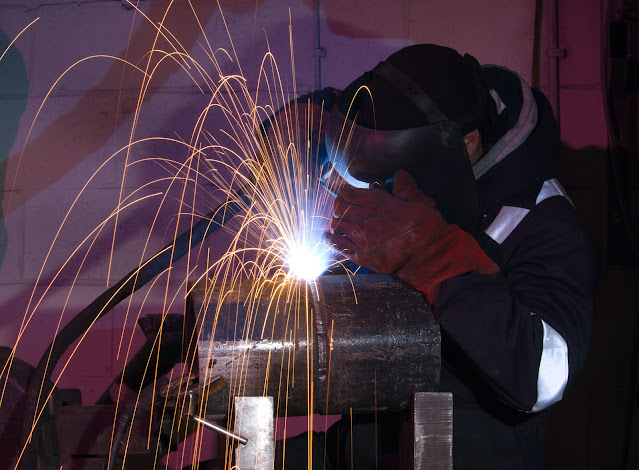Welding and metal fabrication. Is one just like the other? Not exactly - even though many people use the words interchangeably. And, it’s not surprising since they are two of the most well-known processes of metal working. Welding is one of the many different operations that can be used in the fabrication of metal. And many welders know how to fabricate on some level just as many fabricators usually know how to weld. So, what sets these two apart? What is the difference between welding and metal fabrication? Let’s talk about it.
What is Welding?
Welding is a fabrication process that infuses two pieces of metal together. There are different ways in which this is done - using heat, pressure, or a combination of the two. Most commonly heat is used to melt the base metal while a filler metal is then melted to create a weld pool of molten metal. Once it cools, it hardens and unites the two pieces of metal together. Welding requires a lot of hands-on work and an understanding of the different types of welding tools and machinery, as well as metal and their melting points. Also having knowledge of filler materials and which will work well to bring the two metal pieces together is also required of the welder.What is Metal Fabrication?
Welding may be one piece of the fabrication process - an essential piece - but it is not the only one. There are many other types of processes that don’t require the use of welding. In fact, metal fabrication encompasses the entire manufacturing process to create products made of metal or even large machines. And it is common for metal fabrication to take place in stages, having different groups create different parts of the process.The Difference Between Welding and Metal Fabrication
Metal fabrication and welding are two very key parts of metalworking. However, as we are learning, they are two distinct processes. Here’s how they differ.Fabrication Involves More Than Welding
Even though fabrication considers welding a major component in its processes, there are many more components, too. You cannot simply fabricate metal using solely welding. You will likely need to weld, yes, but you will also need other techniques, too. Fabrication starts with the drawing and planning of an idea for creation. It also involves things like machining, cutting, and forming pieces of metal. In other words, welding may be involved in fabrication at one step along the way, but there are many other metalworking techniques in play, too.Fabrication and Welding Each Require Special Skills
As mentioned above, it is not uncommon for welders and fabricators to each know a little about the other. But those who have honed their skills will tell you that each one requires a specialized skill set. Many fabrication processes use a stable tool or machine to fabricate the metal. Welding uses many stationary tools, too, but they also perform a lot of their techniques by hand. They have to have precise skills and knowledge of the different types of metals. That is, of course, if they want to maintain a strong weld. So, even though all metal workers likely have a little knowledge of each technique that may be used, different skills are needed for each.Both Fabrication and Welding Use Different Tools
The tools that both fabricators and welders use to get the job done are very different. Metal fabrication involves a lot of cutting, machining, and bending. To achieve the finished product you will need different cutting machines, such as laser cutters, plasma torches, and even mechanical saws. Welders, on the other hand, use very different tools, such as torches, welding clamps, and consumable electrodes. There is a lot of safety equipment involved in welding, too.If you’d like to learn more about metals and how they can be used in the metal fabrication or welding process, contact the professionals at Atlas Bronze at 800-478-0887.


